

The Problem
Restaurants need a flexible way to sell items across reservations, events, takeout, and more

The Solution
A modular items feature

My Role
Lead designer and researcher

The Impact
Expanding how restaurants can generate revenue outside of traditional dine-in
Problem Context
In mid-March 2020, states announced stay-at-home orders that turned the restaurant industry on its head. With many restaurants forced to close dine-in or reduce capacity, there was a pressing need for alternative revenue streams.
While some restaurants turned to delivery platforms like Doordash and Seamless, many restaurants felt the payout of delivery was not enough to not rationalize the effort. Additionally, many Resy restaurants wanted to pursue more creative ideas but traditional delivery systems lacked the functionality.

The Team
As a highly time-sensitive initiative, this project required quick alignment and extensive collaboration across several teams. I drove the conversation from discovery, to scoping, and delivery; leading discussions with restaurant partners, product / engineering management, and account management. The restaurant, consumer, and transaction feature teams overall consisted of a 3 PMs and team of 10 engineers. I led research and executed restaurant-facing designs, working closely with my consumer design counterpart.
Initial Research
My team quickly set out to understand how restaurants were adapting to COVID, painpoints with existing solutions, and to explore what Resy's role could be in this difficult time. We conducted conversations with 8 restaurants. Below is a summary of key insights:

Restaurants don’t want to offer the standard, lackluster take out experience and are instead exploring how to bring an elevated restaurant experiences at home through meal kits, prix-fixe menus, add-ons, and more.

Special dining experiences are an opportunity to both extend their hospitality and brand into guests’ homes, while enabling higher spend and likely higher margins.

There are no tools to execute. A tool that would allow restaurants the flexibility to showcase their creativity and package these experiences as unique and branded would be the key to success.
With a solid understanding of the problem at hand, our hypothesis was that selling items was a flexible solution that enables restaurants to easily setup, manage and deliver culinary experiences beyond traditional dine-in.

Defining the Solution
I led conversations across product, design, and engineering to better define our solution. To deliver value quickly, I pushed my team to think of how we could break out the solution into smaller chunks of work while building foundations for later phases. Our approach was to launch in phases that also represent the functional evolution of the user’s journey in creating, managing, and delivering their add-ons. I also worked closely with our engineers to ensure each phase of the data model could support the long-term strategy for this feature.
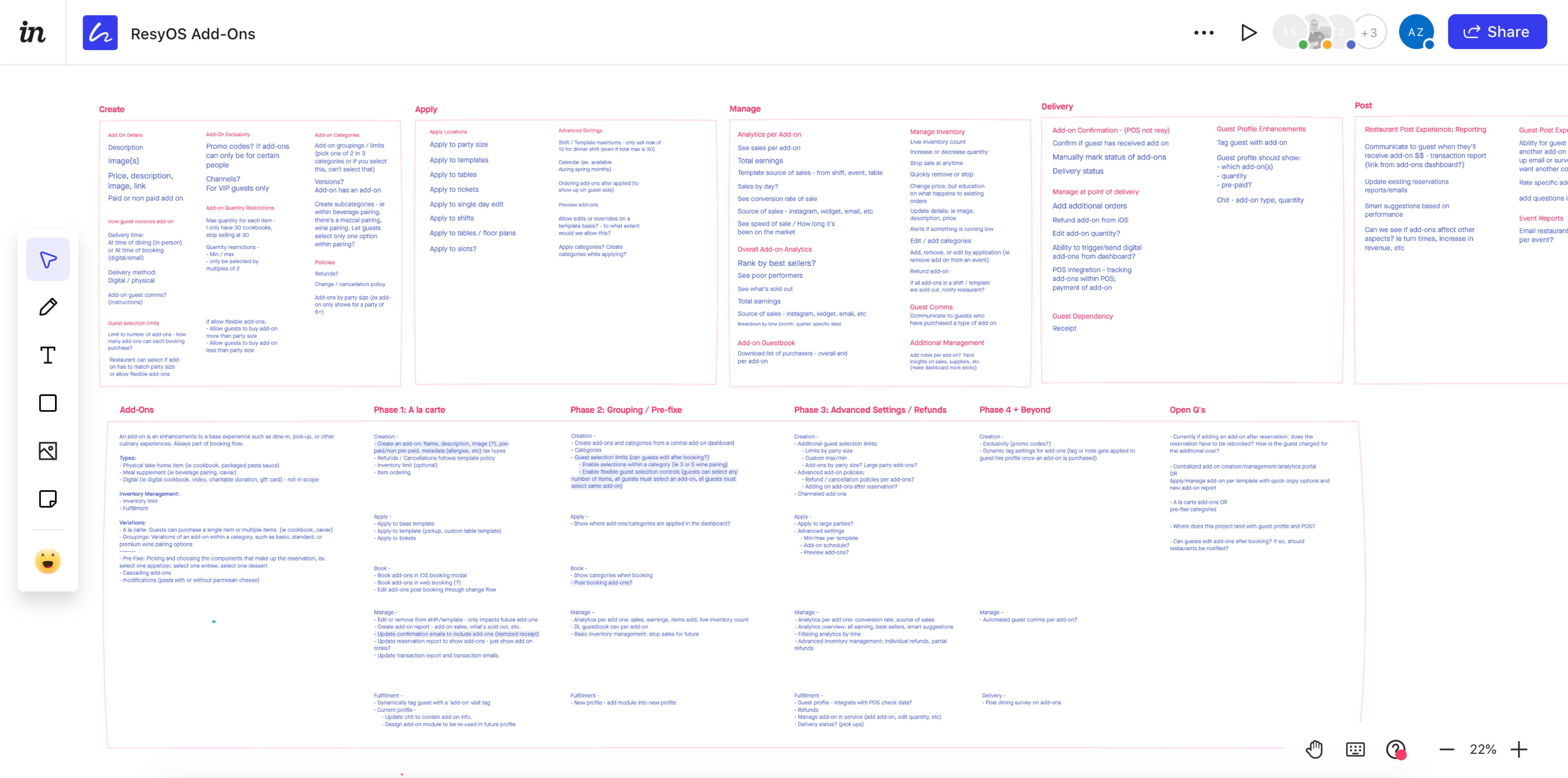

Design Exploration & Usability Tests
After initial design explorations, I conducted remote usability tests with 4 restaurants to validate our approach. Usability tests focused on tasks on each part of the user’s journey in creating, managing, and delivering add-ons. Early feedback showed we were heading in the right direction and helped us further scope the first phase.
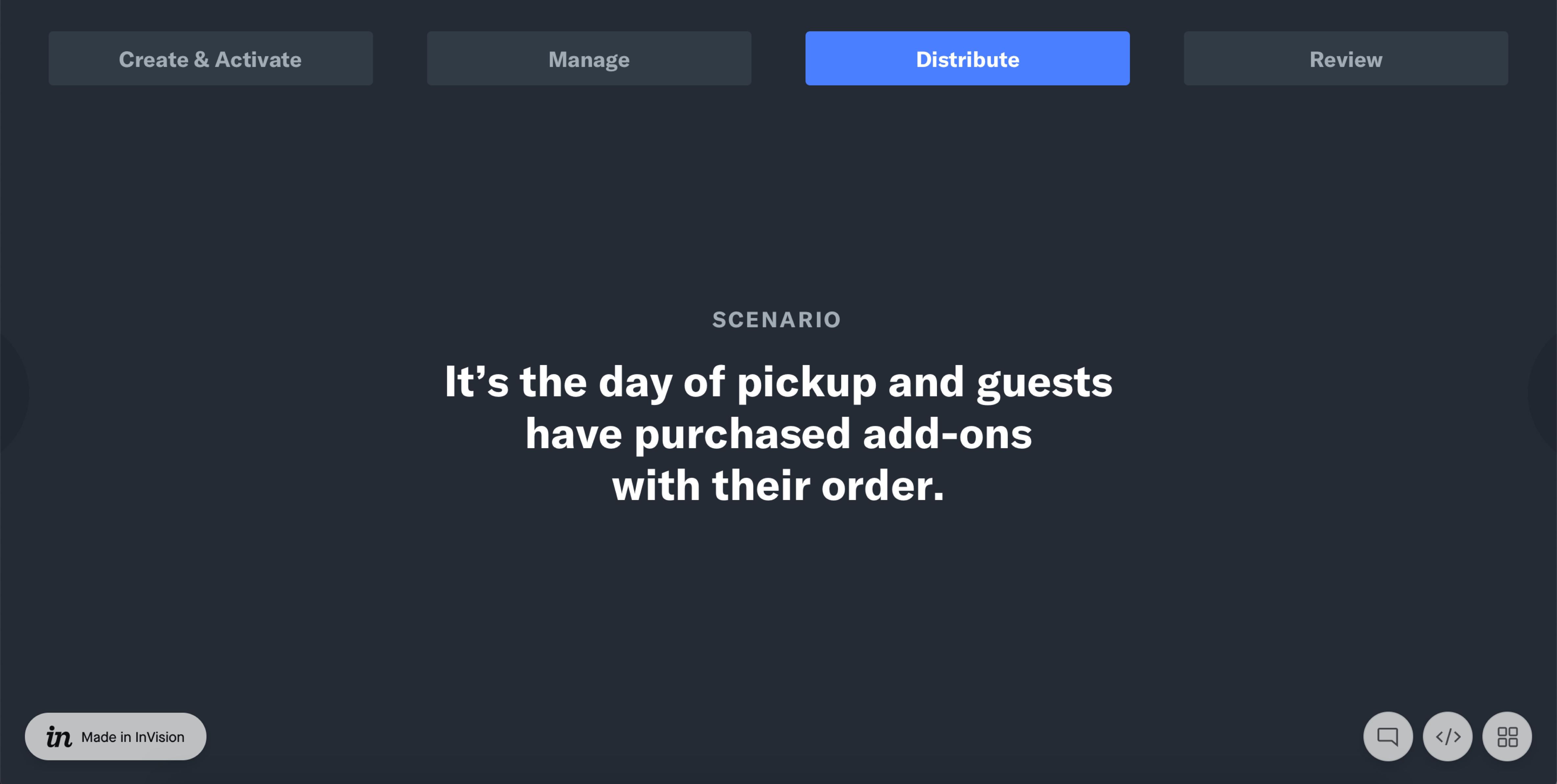
Phase 1: Designing for Basic Add-Ons
The goal of the first phase of work was to enable creating and selling multiple items per reservation, pickup option, or event. To enable this functionality across any inventory type, I designed the feature to be modular so it can be added to any page or flow in our dashboard. The item creation flow is a simple form that can be triggered from and saved into an item library that can be searched and accessed across the dashboard.

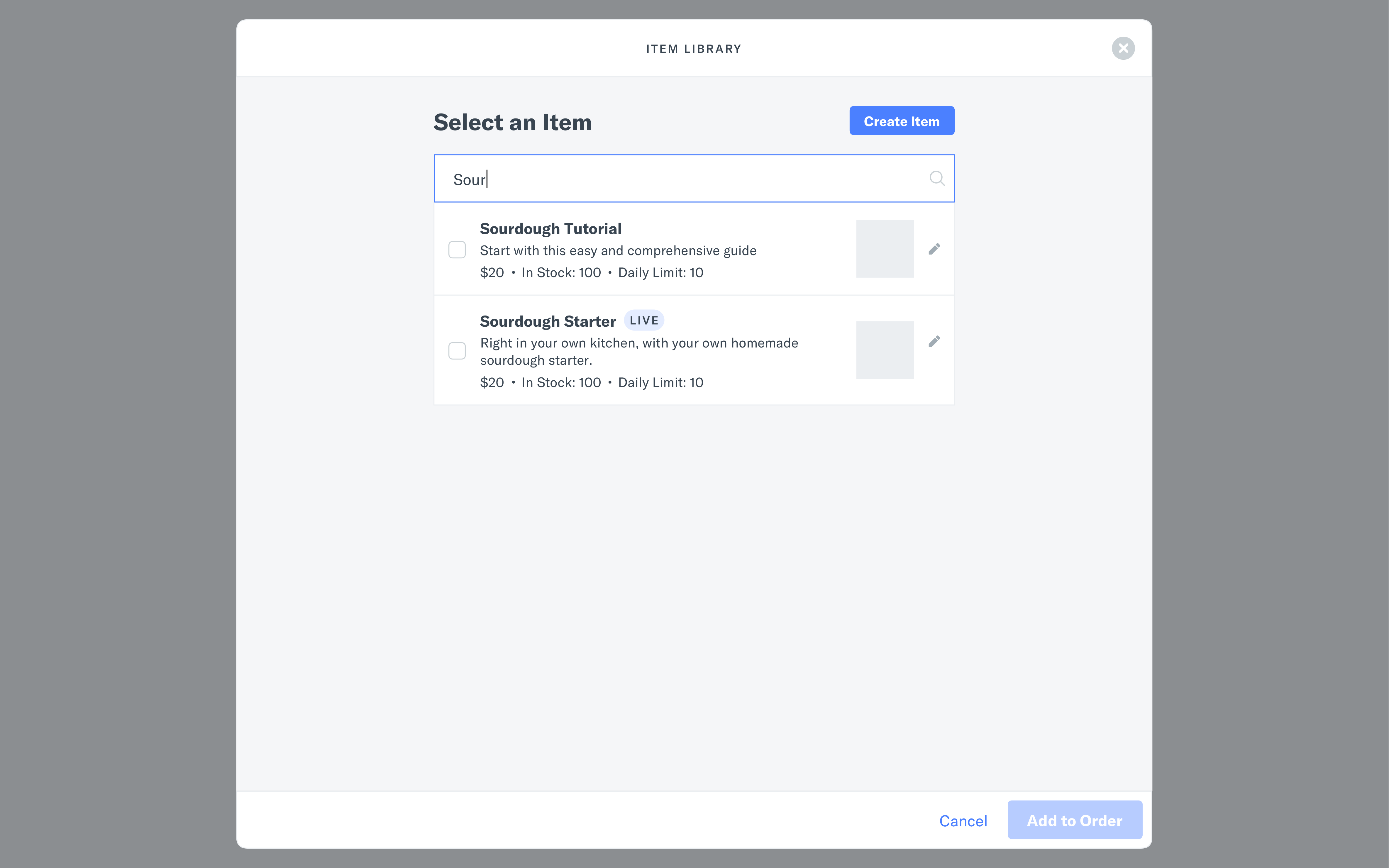
Phase 2: Designing for Advanced Menus
In phase 2, we unlocked better guest marketing with categories and the ability to create advanced menus. I redesigned the empty state around category templates based on top item scenarios. Early feedback from restaurants indicated that having control over each detail was key to packaging these experiences as unique and branded so we introduced re-ordering and additional content capabilities.

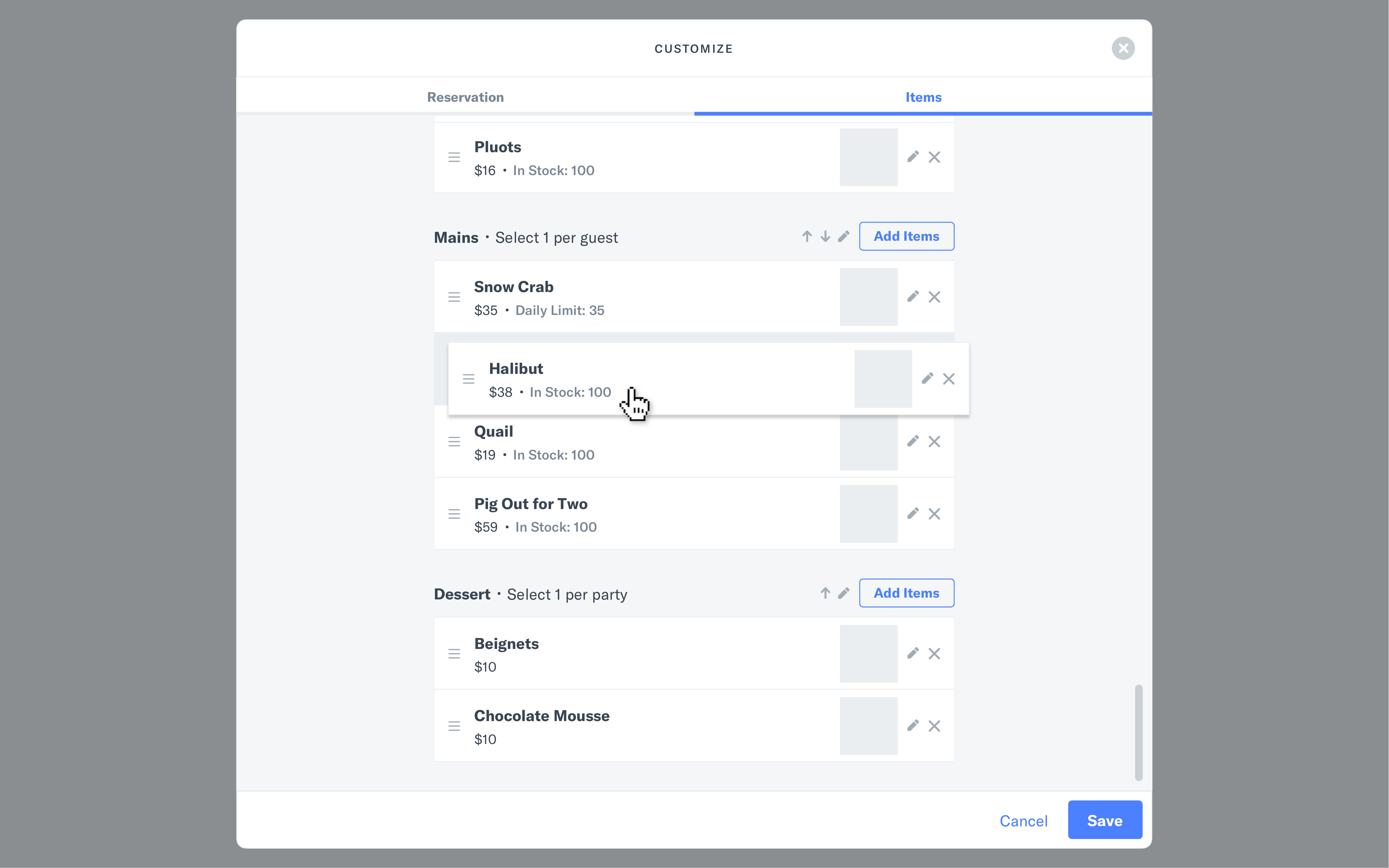
Throughout each phase, I also continued to design updates to our iOS app. As the app is geared towards in-service management, the main goal was design a simple booking experience for restaurants to book on behalf of guests and to streamline distribution of items during service.
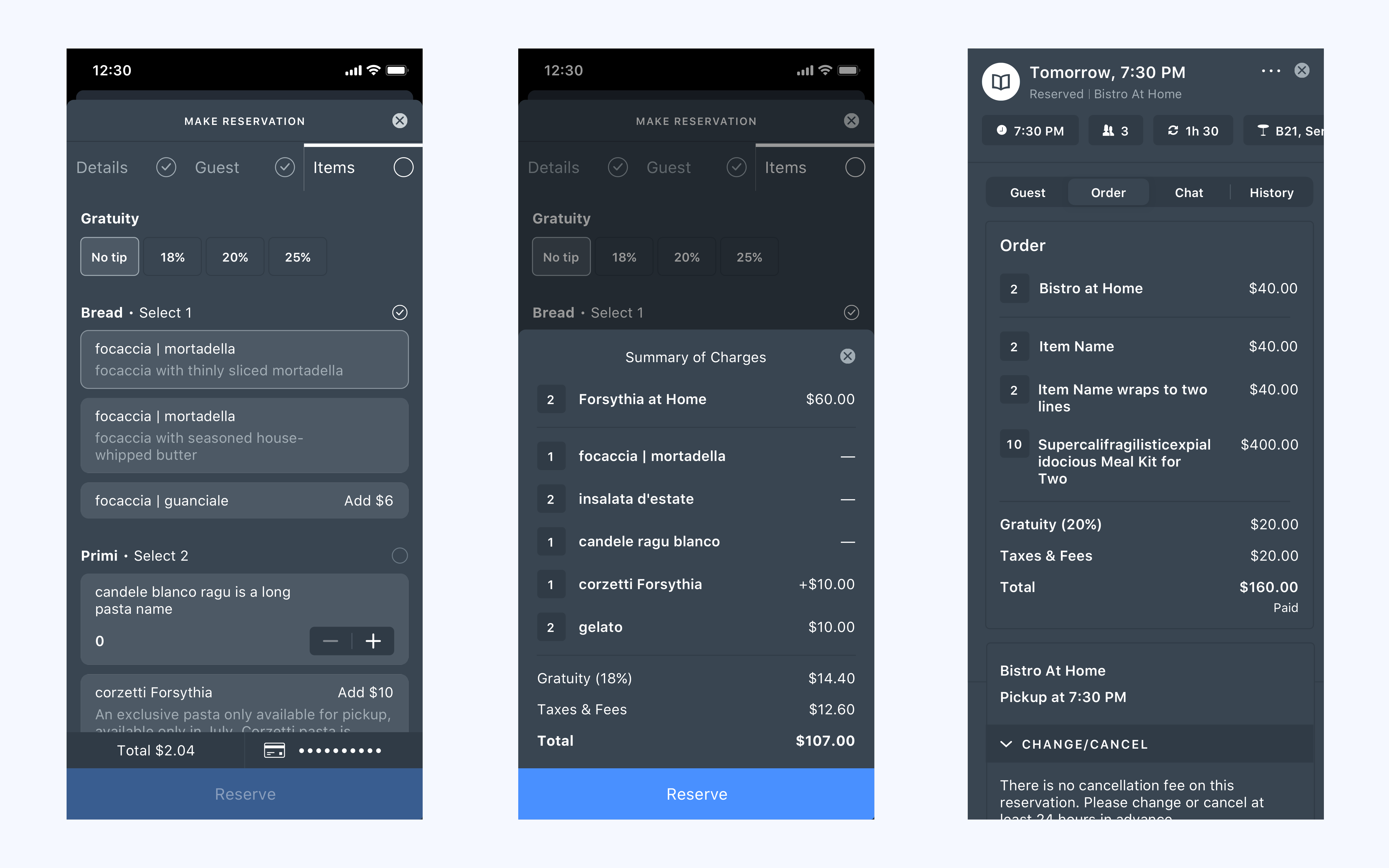
Pilot Program & Launch
We launched each phase into a pilot program and saw great adoption throughout. Since launch, this feature has impacted over $120K in supplemental pre-paid revenue. This feature has also been instrumental in helping restaurants optimize supply planning as nearly 42% of items are not pre-paid. Below are a few notes from restaurants regarding the impact of this feature:
We can pre-sell items nearly two months in advance and make them available only on the specific days we want.
That's something we just couldn't do with our day-to-day takeout platform.

Pasjoli
People can add a delivery of the wines we’re going to cover [during virtual events], a meat or cheese plate, or even extra glasses of wine to sip on and listen in.
All of those things have been very helpful for the business.

Ungrafted
At the end of the day, we’re really just trying to keep our restaurant going and keep our employees at their jobs.
This helps supplement our income.

Miller Union